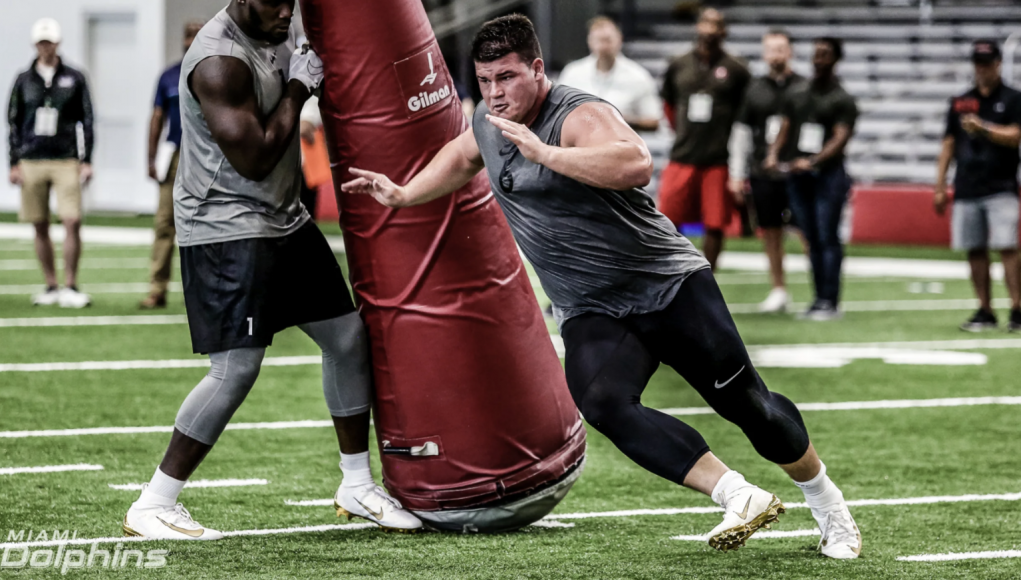When Arturo Cabre was a freshman at McFatter Technical High School in Davie, one of his friends introduced him to the world of American football and the Seattle Seahawks. After watching videos of running back Marshawn Lynch, he was hooked on the sport.
Before he was forced to leave the University of Central Florida campus for the coronavirus, his love for football was cemented in his room with a huge Seahawks poster hanging on his orange wall and a Seahawks blanket on top of his comforter, but as a Latino, Cabre feels removed from the sport.
“I can name a bunch of greats: Peyton Manning, Tom Brady, Ray Lewis, Barr Sanders; but I can only think of one Hispanic: Tony Gonzales,” said Cabre.
The NFL season came to close after Super Bowl LIV between the Kansas City Chiefs and San Francisco 49ers, with the Chiefs coming out victorious on Feb. 2. The 2020 NFL draft will begin tomorrow, April 23, in Las Vegas. Amid the spectacle. Hispanic or Latin fans have noticed the lack of representation within the sport.
A recent poll from ESPN indicates that while about 28.7 million Hispanic-Americans consider themselves football fans, only 16 of the 1,696 players last season were of Hispanic origin – less than one percent of all players. Very few of the projected top 100 draft picks are Hispanic.
“Honestly, it kind of sucks that there are not that many Latin players because football is a popular sport and everyone loves to play it,” said Angel Navarro, a 23-year-old Patrick Mahomes fan. “Sometimes people feel that Hispanics should be playing baseball or soccer and that’s it.”
One of the reasons behind this imbalance could be the lack of college recruitment in the community. Within the NFL, players are required to have played their sport in college. If colleges don’t accept Hispanics or Latinos in their school for a certain sport, then there’s a smaller likelihood of them being drafted.
The NFL has been slowly combating this issue with a new program called Player Pathway that brings non-Americans players into the NFL from around the globe. Durval Queiroz Neto came from Brazil to play for the Miami Dolphins as a defensive tackle in 2019, but since the program started, only two out of 18 players have been of Latin or Hispanic descent. The rest came from Europe or Australia.
“It’s a start, it’s not the best right now,” said Navarro. “They want to make the NFL a global sport. If you want to make it global then go anywhere outside of Europe to actually emphasize on football … [if they] go to South America, Caribbean and potentially Mexico, you can find some good football players outside the standard kicker.”
The NFL has attempted to broaden its international appeal by launching the NFL International Series with some regular-season games taking place outside the U.S. The first series was held in London in 2007 and in 2016 another series began in Mexico City.
“People feel the need [to] play sports or have hobbies that only their [ethnicity] play as well due to the fear of rejection or solidarity,” said John Montanez, a 24-year-old of Puerto Rican. “Hence the same ethnicities in each sport with a few that break the [mold].”
In Central and South America, soccer is the most popular sport. Before the 1970s, Hispanic or Latin men who played in the NFL were punters or kickers. It wasn’t until after the 1970s that they reached a wider variety of positions such as tight ends, like Tony Gonzalez, of Argentine descent, or quarterbacks like Tony Romo who is of Mexican descent.
While the NFL has been making strides to include the Hispanic and Latino communities in the world of football with their programs and away games, when it comes to having players on the field, the NFL hasn’t made a touchdown yet.
































